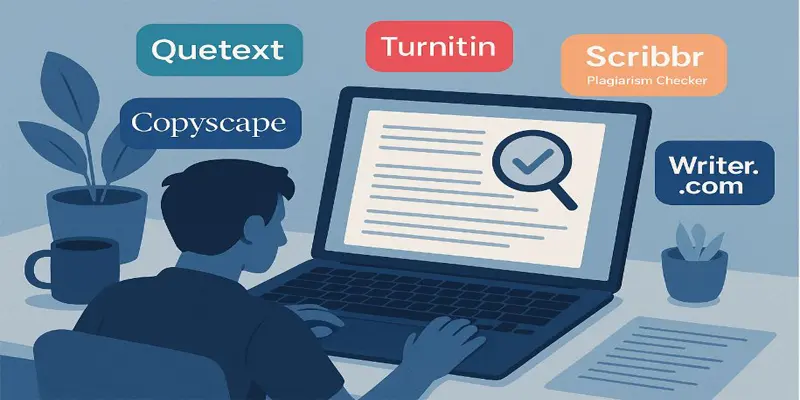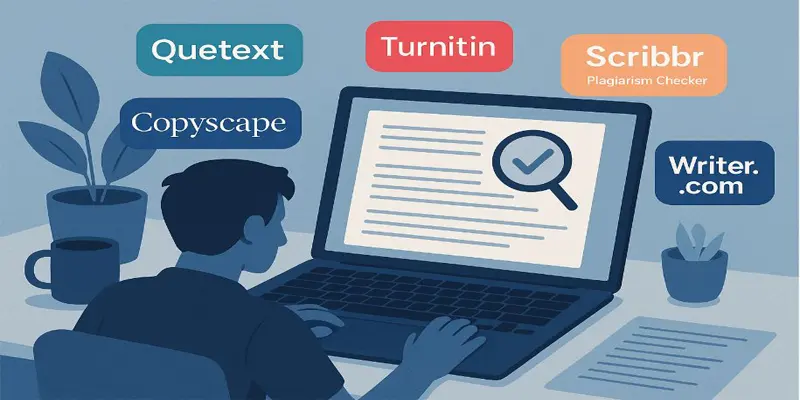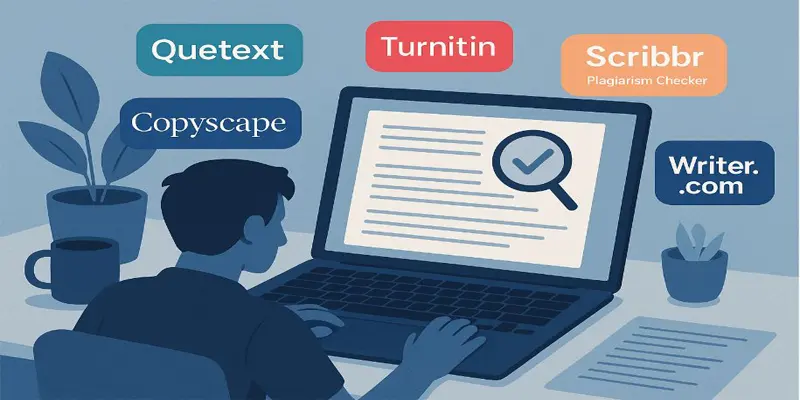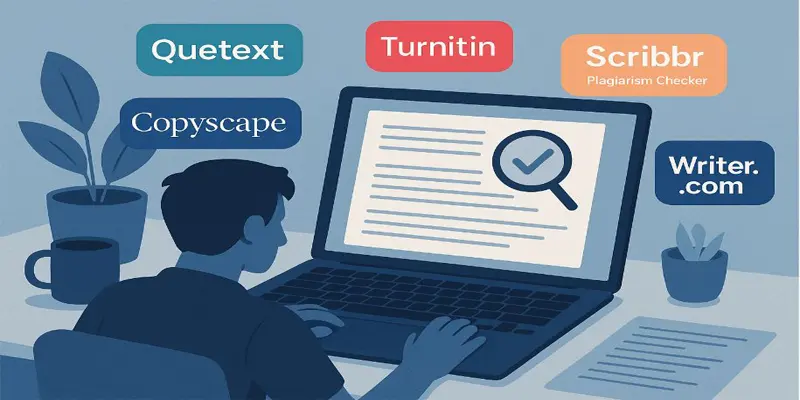Struggling to Keep Up With Competitors? AI Can Help
Ever feel like your competitors are always just a little faster? They launch a new product right after you finally update your landing page. Or they tweak their ad strategy and—bam!—they start showing up everywhere your audience is.
You're not alone. Competitive intelligence has always been tricky. But now, with AI in the picture, it doesn't have to feel like you're playing catch-up all the time. Let’s talk about how artificial intelligence can give you a serious edge without burning you out.
Top AI Tools for Competitor Analysis You Should Know About
There’s a growing list of AI-powered tools designed to help you monitor what your competitors are up to — without you having to stalk them manually. Here are a few that are worth a spot in your strategy.
Crayon AI – Track Website & Content Updates in Real Time
Ever wished you had a magic radar that could tell you the moment a competitor changes their pricing, updates their messaging, or drops a new product? Crayon AI is basically that.
- What’s the tool? It tracks changes across competitors’ websites, landing pages, blogs, and more.
- When to use it? Perfect when you're planning a product launch or revamping your messaging.
- Who benefits? Product marketers, content strategists, and anyone who wants to stay in-the-know without digging.
- Casual tip: Set alerts for specific pages (like pricing or blog) so you only get notified when it actually matters.

SimilarWeb AI – See Where Their Traffic Comes From
Wouldn’t it be great to know how your competitors are attracting visitors? SimilarWeb breaks it down.
- What’s the tool? It analyzes web traffic sources—direct, referral, search, social, you name it.
- When to use it? If you're trying to figure out where to invest in content, ads, or partnerships.
- Who benefits? Digital marketers, growth teams, and startup founders.
- Pro tip: Compare traffic spikes with their campaign dates to guess what’s really working.
Kompyte AI – Monitor Ads, Emails, and Campaign Moves
This one’s like having an undercover agent inside your rival’s marketing team.
- What’s the tool? It automates tracking of competitor ads, landing pages, email campaigns, and even sales enablement materials.
- When to use it? When you’re launching a new campaign or looking to refine your positioning.
- Who benefits? Marketing managers and brand teams.
- Tip: Use Kompyte’s timeline view to track how your competitor messaging evolves over time.
Sprout Social Listening AI – Listen to the Buzz Around Their Brand
Sometimes what customers say about your competitors is more valuable than what the brand puts out.
- What’s the tool? It monitors online conversations, public sentiment, hashtags, and interactions related to particular brands or subjects.
- When to use it? Great during a PR push or when you're considering influencer or social campaigns.
- Who benefits? This includes professionals responsible for managing social media, fostering online communities, and conducting brand research.
- Casual example: Spot complaints about a competitor’s product? That’s your cue to step in with a better solution.

Sprout Social AI tracking brand mentions and audience sentiment online
SEMrush Competitive Intelligence – Spy on Their SEO & PPC Secrets
This is the SEO nerd’s dream. (And I say that lovingly.)
- What’s the tool? It breaks down organic keywords, paid search campaigns, and backlink strategies.
- When to use it? When you want to understand where your competitor’s traffic is really coming from.
- Who benefits? Content marketers, SEO experts, paid media teams.
- Pro tip: Use their keyword gap analysis to uncover search terms your rivals are ranking for — and you’re not.
AdClarity AI – Visualize Their Digital Ad Strategies
Want to peek into your competitor’s ad vault? AdClarity makes that possible.
- What’s the tool? It visualizes ad creatives, formats, channels, and timing across digital platforms.
- When to use it? If you’re developing an ad campaign and want to avoid overlap—or outshine them.
- Who benefits? Performance marketers, media buyers, creative teams.
- Pro tip: Don’t just look at what they run — look at how often and where. Patterns are everything.

Why AI Beats Manual Tracking Every Time
How automation saves you hours each week Instead of checking your competitors’ websites and ads manually, AI tools track every change 24/7. Set it up a single time, and automation will manage the workload from there.
The accuracy edge: real-time vs outdated data
By the time you catch a change manually, your competitors might’ve already pivoted again. AI ensures you’re reacting to live intel, not stale screenshots.
Examples of what marketers miss without AI tools
Did a competitor just launch a new landing page? Test new ad copy? Shift their messaging? Without AI, those subtle (but strategic) moves might pass you by.
Sure, you could try to check your competitors’ sites every day. Or monitor their emails. Or dig through their PPC campaigns. But honestly… who has time for that?
AI tools don’t just do it faster — they do it smarter. They notice things you might miss. They log changes, detect patterns, and surface anomalies. That’s insight you’d spend hours digging for — delivered on autopilot.
It’s like having a research intern who never sleeps (and never asks for coffee breaks).
How to Choose the Right Tool Based on Your Marketing Goals
Not all tools are created equal — and not all of them will make sense for you. So how do you choose?
Is Your Focus SEO, Traffic, or Social Engagement? Before picking an AI tool, think about what part of your marketing you’re trying to improve. Is it about ranking higher in Google? Getting more social buzz? Or tracking paid traffic?
Each tool fits a specific niche — and knowing your goal makes all the difference.
Start by identifying your primary goal. If it’s:
SEO/organic traffic: Go for SEMrush and SimilarWeb.
Paid media: Try AdClarity or Kompyte.
Social trends: Sprout Social is your friend.. If it’s:
- SEO/organic traffic → Go for SEMrush and SimilarWeb.
- Paid media → Try AdClarity or Kompyte.
- Social trends → Sprout Social is your friend.
Which Tools Pair Well with Small vs. Large Teams?
Not every team has the same capacity. Some tools are made for lean solo marketers, while others shine in big teams with lots of moving parts.
Let’s break down who benefits from what:
Small teams: Look for tools with automation and built-in reports — like Crayon or Sprout — so you can work smart, not hard.
Large organizations: You can invest in layered tools that integrate data across SEO, ads, and content. SEMrush + AdClarity, for example, offers a strategic mix..
- Small teams might love tools with built-in automation and reporting (like Crayon or Sprout).
- Larger enterprises often have the capacity to integrate multiple tools, enabling a more complete understanding.
Think Insights, Not Features
It’s easy to get distracted by flashy features and dashboards. But remember — the goal isn’t to use the tool for its own sake.
The real win? Tools that translate data into insights. You want to walk away with answers, not just charts. Ask yourself: is this helping me make smarter decisions, or just adding noise?

Common Mistakes People Make When Using AI for Competitive Research
Let’s save you some headaches. Here’s what to avoid:
- Trusting raw data without context: Numbers are cool. But why the spike? What caused the drop? Always look deeper.
- Over-monitoring and under-planning: You don’t need alerts every five minutes. It’ll just lead to panic, not progress.
- Forgetting that insights need action: Knowing a competitor launched a new ebook? Great. Now, how are you responding?
Use the data — don’t just collect it.
Pro Tips for Smarter, Stress-Free Competitive Tracking
Here’s how the pros keep tabs without losing sleep:
- Set automated alerts for major changes (like homepage updates or new ad creatives).
- Track trends over time — not just events. One-off shifts might be noise, but patterns tell a story.
- Keep your internal team aligned with what you’re learning. Share insights regularly so you’re not the only one who knows what’s happening.
Think of yourself as an analyst and a storyteller. Spot the trend — then bring it to life for your team.
Bonus: How to Combine Tools for a 360° View of the Competition
Why using multiple tools gives a deeper view
One tool gives you a glimpse. But pairing tools lets you connect the dots. For example, seeing what they change on their site and how social sentiment reacts gives you context + reaction.
Examples of smart tool combinations
- SEMrush + AdClarity: Covers both organic and paid channels.
- Crayon + Sprout Social: Tracks what they say and what people think.
How to avoid overlap when using multiple platforms
Stick to tools that focus on different layers of the funnel. Avoid tools that do the same job — instead, think of how they complement each other. Bonus tip: integrate them with your dashboard or CRM to streamline tracking.
One tool is good. But two or three working together? That’s where the magic happens.
For example:
- Combine SEMrush for SEO insights with AdClarity for advertising data to cover both organic and paid strategies.
- Use Crayon (site changes) + Sprout Social (public buzz) to track messaging shifts and their impact.
Keep it simple — you don’t need a dozen tools to be effective. But thoughtful combos give you angles you’d miss if you only used one lens.
Final Thought – Stay Curious, Not Competitive
Your goal isn’t to copy — it’s to outthink
It's not necessary to replicate your competitors' strategies to succeed. You need to understand why they’re doing it — and how to do it better.
Let AI guide strategy, not replace it
AI is a tool, not a brain. It gives you the map, but you’re still the driver. Use it to steer smarter, not to run on autopilot.
Pick one tool, start small, and build momentum
Start with a single platform, explore a few key features, and test it out for a week. You’ll be surprised how quickly you gain clarity — and confidence.
Here’s the thing: you’re not using AI to copy your competition. You’re using it to understand them, learn from them, and stay agile in your own lane.
Competitor analysis isn’t about paranoia — it’s about perspective. The goal is smarter moves, not louder ones.
So pick a tool. Try it for a week. Set a few alerts, explore some dashboards, and see what you notice. Curiosity beats anxiety — every time.
You've got this.
Hey, I’m Nathan Ellis, based out of Brisbane, Australia. I work as a Digital Marketing Consultant over at PixelFlow Agency.
So, I’ve been doing digital marketing for quite a while — like almost 10 years or so — and honestly, competitor analysis was always... kind of messy for me. I used to bounce around different tools or just guess based on what we saw online. Not exactly reliable, you know?
Anyway, my teammate Sarah kept bugging me about SEMrush. I didn’t take it seriously first, but eventually I gave in (glad I did tbh).
It’s packed. I mean, you can look at what keywords your competitors are ranking for, who’s linking to them, and even peek into their ads — it’s sort of like getting a look inside their strategy. Suddenly, I wasn’t just guessing anymore, I had actual stuff to show to clients.
Now when I'm in meetings, I feel a lot more prepared. Clients notice that too, they ask more questions and trust the plan more.
The only thing is... yeah, it's kinda pricey. Like, it’s totally worth it if you’re running a proper agency or have paying clients — but if you’re a freelancer starting out, it might feel a bit heavy on the wallet. Would be cool if they had a simpler, cheaper version.
Still, honestly, it’s one of those tools that once you start using it properly, you won’t wanna go back. It just makes everything easier to explain.
Posted on: 30 June, 2025